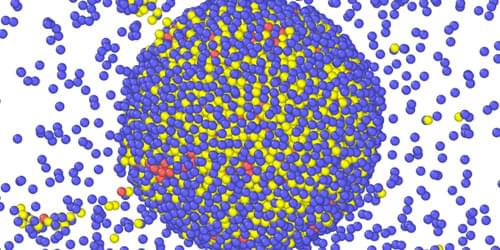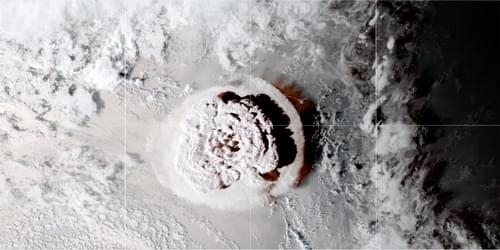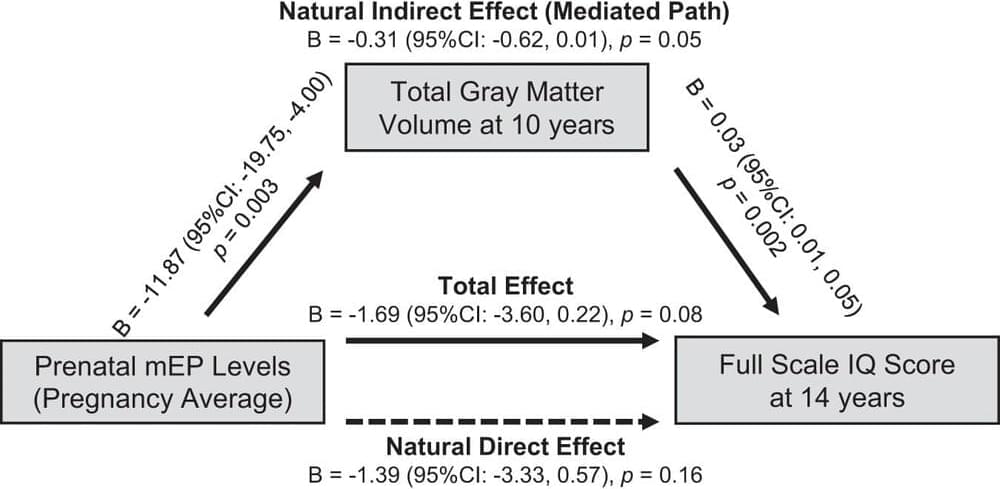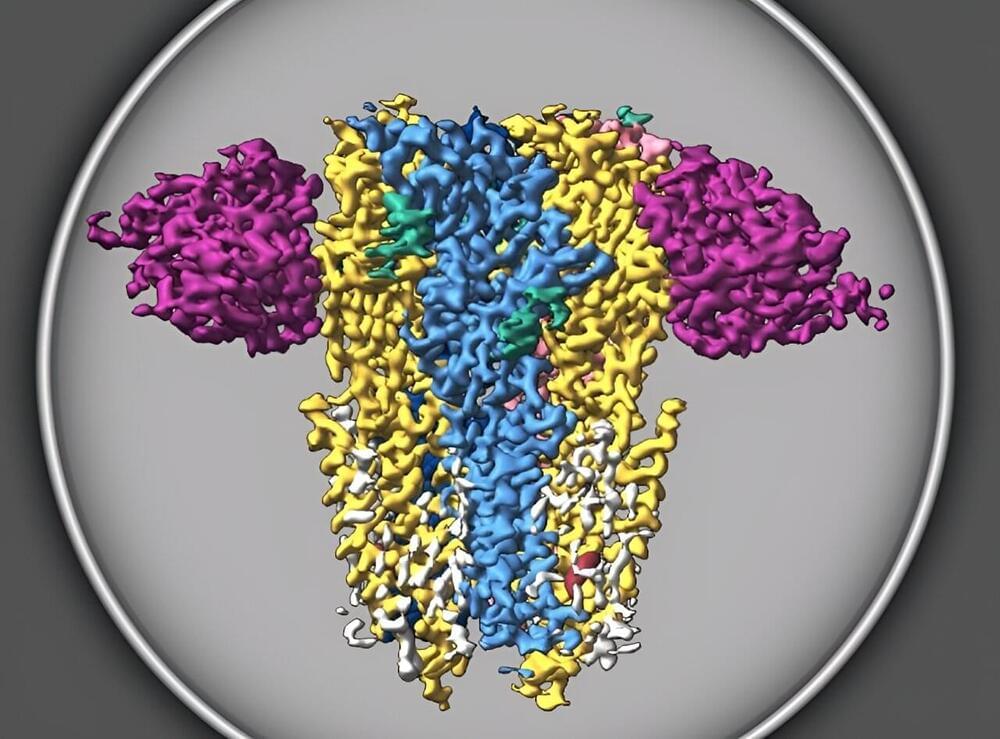The concurrent analysis of two measurements of a biochemical signaling network can provide more information than two separate probes of the datasets.



Many biological processes depend on chemical reactions that are localized in space and time and therefore require catalytic components that self-organize. The collective behavior of these active particles depends on their chemotactic movement—how they sense and respond to chemical gradients in the environment. Mixtures of such active catalysts generate complex reaction networks, and the process by which self-organization emerges in these networks presents a puzzle. Jaime Agudo-Canalejo of the Max Planck Institute for Dynamics and Self-Organization, Germany, and his colleagues now show that the phenomenon of self-organization depends strongly on the network topology [1]. The finding provides new insights for understanding microbiological systems and for engineering synthetic catalytic colloids.
In a biological metabolic network, catalysts convert substrates into products. The product of one catalyst species acts as the substrate for another species—and so on. Agudo-Canalejo and his team modeled a three-species system. First, building on a well-established continuum theory for catalytically active species that diffuse along chemical gradients, they showed that systems where each species responds chemotactically only to its own substrate cannot self-organize unless one species is self-attracting. Next, they developed a model that allowed species to respond to both their substrates and their products. Pair interactions between different species in this more complex model drove an instability that spread throughout the three-species system, causing the catalysts to clump together. Surprisingly, this self-organization process occurred even among particles that were individually self-repelling.
The researchers say that their discovery of the importance of network topology—which catalyst species affect and are affected by which substrates and products—could open new directions in studies of active matter, informing both origin-of-life research and the design of shape-shifting functional structures.

X-ray free-electron lasers (XFELs) first came into existence two decades ago. They have since enabled pioneering experiments that “see” both the ultrafast and the ultrasmall. Existing devices typically generate short and intense x-ray pulses at a rate of around 100 x-ray pulses per second. But one of these facilities, the Linac Coherent Light Source (LCLS) at the SLAC National Accelerator Laboratory in California, is set to eclipse this pulse rate. The LCLS Collaboration has now announced “first light” for its upgraded machine, LCLS-II. When it is fully up and running, LCLS-II is expected to fire one million pulses per second, making it the world’s most powerful x-ray laser.
The LCLS-II upgrade signifies a quantum leap in the machine’s potential for discovery, says Robert Schoenlein, the LCLS’s deputy director for science. Now, rather than “demonstration” experiments on simple, model systems, scientists will be able to explore complex, real-world systems, he adds. For example, experimenters could peer into biological systems at ambient temperatures and physiological conditions, study photochemical systems and catalysts under the conditions in which they operate, and monitor nanoscale fluctuations of the electronic and magnetic correlations thought to govern the behavior of quantum materials.
The XFEL was first proposed in 1992 to tackle the challenge of building an x-ray laser. Conventional laser schemes excite large numbers of atoms into states from which they emit light. But excited states with energies corresponding to x-ray wavelengths are too short-lived to build up a sizeable excited-state population. XFELs instead rely on electrons traveling at relativistic speed through a periodic magnetic array called an undulator. Moving in a bunch, the electrons wiggle through the undulator, emitting x-ray radiation that interacts multiple times with the bunch and becomes amplified. The result is a bright x-ray beam with laser coherence.

The 2022 eruption of a partially submerged volcano near Tonga produced ejecta that hurtled at 122 kilometers per hour—as determined by timing the ensuing rupture of a seafloor cable.
On January 15, 2022, Earth experienced its most explosive volcanic eruption in 140 years at Hunga Tonga–Hunga Haʻapai, a partially submerged volcano in the Pacific Ocean near the Kingdom of Tonga’s main island. Now Michael Clare and Isobel Yeo of the UK’s National Oceanography Centre and their colleagues have determined the maximum speed of the underwater rock flows associated with this event [1]. Their study constitutes the most detailed investigation into the underwater aftermath of a powerful volcanic eruption and opens a new window onto a broad class of particle-laden flows.
The eruption at Hunga Tonga–Hunga Haʻapai hurled more than 6 km3 of debris up to a height of 57 km. When that ejecta plunged back to Earth, some of it struck the volcano’s steep underwater slopes, launching torrents of water-entrained sediment outward across the seafloor. Seven minutes after the initial eruption, Tonga lost its internet connection to the rest of the world, an event that Clare, Yeo, and their colleagues used to deduce the speed at which the entrained material moved.

Children whose mothers had a higher exposure to certain phthalates during pregnancy tend to show smaller total gray matter in their brains at age 10. This is one of the main conclusions of a study led by the NYU Grossman School of Medicine and the Barcelona Institute for Global Health (ISGlobal), and published in Molecular Psychiatry.
The study also found that maternal exposure to plasticizers during pregnancy is associated with lower child IQ at age 14, which confirmed the results of two previous study on the topic. Moreover, the research team observed that this relationship between exposure to certain phthalates and lower child IQ is partially influenced by total gray matter volumes. In other words: exposure to plasticizers before birth could lead to smaller total gray matter in childhood, which in turn could be related to a lower IQ.
Finally, the results showed an association between gestational exposure to plasticizers and smaller white matter volumes in girls.
Engineering researchers at Lehigh University have discovered that sand can actually flow uphill.
The team’s findings were published today in the journal Nature Communications. A corresponding video shows what happens when torque and an attractive force is applied to each grain—the grains flow uphill, up walls, and up and down stairs.
“After using equations that describe the flow of granular materials,” says James Gilchrist, the Ruth H. and Sam Madrid Professor of Chemical and Biomolecular Engineering in Lehigh’s P.C. Rossin College of Engineering and Applied Science and one of the authors of the paper, “we were able to conclusively show that these particles were indeed moving like a granular material, except they were flowing uphill.”
Planet Earth is about to receive a special delivery—the biggest sample yet from an asteroid.
A NASA spacecraft will fly by Earth on Sunday and drop off what is expected to be at least a cupful of rubble it grabbed from the asteroid Bennu, closing out a seven-year quest.
The sample capsule will parachute into the Utah desert as its mothership, the Osiris-Rex spacecraft, zooms off for an encounter with another asteroid.

Traumatic brain injury (TBI) is a leading cause of long-term disability and premature death, especially among military personnel and those playing contact sports. Substantial research has examined acute and chronic neurological consequences of TBI; however, non-neurological conditions associated with TBI are understudied.
A new review paper by investigators from Mass General Brigham presents key findings on long-term associations between TBI and cardiovascular disease, highlighting that nervous system dysfunction, neuroinflammation, changes in the brain-gut connection, and post-injury comorbidities may elevate risk of both cardiovascular and cognitive dysfunction in TBI survivors compared to the general population.
The review, published in The Lancet Neurology, emphasizes the need for future cardiovascular research, surveillance and intervention in TBI survivors.

Psychoses like schizophrenia cost billions of dollars annually and derail the lives of people struggling with the disease. Now Monash University researchers have modeled how the effects of psychosis spread through the brain, allowing them to isolate areas where these changes may originate from and which could be targeted by therapies designed to reduce the disease’s progression.

Scientists have revealed the molecular structure of a type of receptor that’s crucial to brain development and function.
Known as Type A GABA receptors, these receptors are already targeted by pharmaceutical anesthetics, sedatives and antidepressants because of their important role in brain function. The discovery, published today in the journal Nature, reveals the dominant assemblies and states of the GABA receptor, a finding that could enable the development of new compounds that more specifically target a range of medical disorders.
“It is the main player that balances excitation and inhibition in the brain,” said lead author Chang Sun, Ph.D., a postdoctoral researcher in the Vollum Institute at Oregon Health & Science University. “It affects all aspects of brain function, from motor function, to memory and learning, and also emotion and anxiety.”